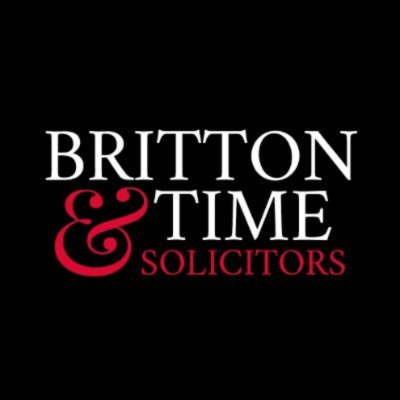Book A Consultation
Maintain a Detailed Incident Log
When dealing with workplace harassment, your documentation becomes your shield. Each incident you meticulously record transforms your experience from personal frustration into compelling evidence. Start by capturing critical details:
- dates and exact times of incidents
- precise descriptions of what occurred
- names of individuals involved
- specific location within the workplace
- any potential witnesses present
Your log should read like a professional journal, noting emotional impact and specific behaviours that made you uncomfortable. Consider digital or handwritten records that are dated and signed. For example, if a colleague makes inappropriate comments during a team meeting, immediately document the conversation’s context, exact words used, and who was present.
Comprehensive documentation provides a clear narrative that legal professionals can understand. Small details often reveal broader patterns of misconduct. Your careful record-keeping transforms subjective experiences into objective evidence, strengthening potential legal proceedings.
Contact us today and submit a lead form. We’ll match you with SRA-regulated solicitors specialising in workplace harassment cases.
Collect and Organise Supporting Evidence
When gathering evidence, your digital trail becomes crucial. Start by carefully capturing and preserving documentation of harassment. Take screenshots of text messages, save complete email chains, and ensure original photo files retain their metadata. These digital records can powerfully support your case.
Secure storage is paramount. Use encrypted digital storage with strong passwords, creating multiple backup copies. Consider cloud services with two-factor authentication for added protection.
- Always keep original files untouched
- Create password-protected folders
- Use encrypted drives
- Document the exact time and date of each piece of evidence
Remember, evidence integrity matters. Never alter screenshots or messages, and maintain a chronological record. Professional digital forensic services can help if your situation feels complex. Timestamps and unaltered original files strengthen your documentation.
Why Documenting Minor Incidents Matters
Tracking seemingly small events is crucial in building a robust legal case against workplace harassment. Even the tiniest interactions can reveal deeper, more sinister patterns when documented consistently. Harassment rarely emerges as a dramatic confrontation; instead, it often begins with subtle, incremental behaviours that can be easily overlooked.
- Each recorded incident creates a comprehensive timeline
- Minor events demonstrate systematic misconduct
- Consistent documentation exposes escalating behaviour patterns
When you meticulously log every uncomfortable interaction – from inappropriate comments to exclusionary behaviours – you transform subjective experiences into objective evidence. For instance, a colleague consistently interrupting you in meetings or making dismissive remarks might seem insignificant individually, but when compiled, these incidents paint a clear picture of workplace harassment.
Your detailed records become powerful tools that demonstrate the cumulative emotional and psychological impact of persistent misconduct. By maintaining a thorough, dated log, you provide concrete proof that can support potential legal action. For additional resources on documenting workplace harassment effectively, visit Citizens Advice to better understand your rights and available support.
Seek Corroboration from Witnesses
Approaching potential witnesses requires a delicate balance of professionalism and empathy. Begin by identifying colleagues who may have observed problematic interactions, ensuring you approach them privately and respectfully.
Witnesses can provide crucial third-party perspectives that strengthen your case. Their statements offer independent verification of events, revealing patterns of misconduct that might otherwise go unnoticed. When requesting their help, be direct yet compassionate. Explain the importance of their potential testimony:
- emphasise confidentiality
- create a safe environment for sharing
- listen actively without judgment
A compelling witness statement includes specific details about what they observed, including dates, times, and precise descriptions of inappropriate behaviour. These accounts can significantly enhance the credibility of your documentation, offering multiple perspectives that illuminate the full context of workplace harassment.
Related Articles

Understanding NHS Voluntary Redundancy
Nhs Voluntary Redundancy Eligibility Criteria For Nhs Voluntary Redundancy How Nhs Voluntary Redundancy Payments Are Calculated What Happens To Your Nhs Pension After Redundancy Differences Between Voluntary And Compulsory Redundancy Other Options Besides Nhs...
Join Our Newsletter
Managing Employment Disputes | How To Protect Your Business
Understanding Your Legal Obligations As An Employer How To Handle Employee Grievances Before They Escalate Creating A Dispute Resolution Policy Working With Solicitors And Advisors Protecting Your Business From Future Disputes The Importance Of Fair Employee Contracts...
Gross Misconduct Claims: Know Your Rights
Unfair Dismissal For Gross Misconduct In The Uk What Qualifies As Gross Misconduct? How To Prove Gross Misconduct In Unfair Dismissal Claims Does Gross Misconduct Always Lead To Unfair Dismissal? Can You Claim Unfair Dismissal For Misconduct Without Warning? Appealing...
How to Prove Workplace Harassment: Complete Guide
How To Prove Workplace Harassment Key Evidence You Need To Prove Workplace Harassment Can A Single Incident Be Considered Workplace Harassment? Keeping A Record Of Workplace Incidents How The Uk Courts Assess Harassment Claims Workplace Harassment And Witness...
Understanding Employment Disputes: Complete Guide
What Are Employment Disputes And How Do They Arise? Employment Dispute Definition Most Common Reasons For Employment Disputes Pathways For Resolving Employment Disputes Employee Vs Employer Perspective On Disputes The Role Of Acas In Employment Disputes Book A...









